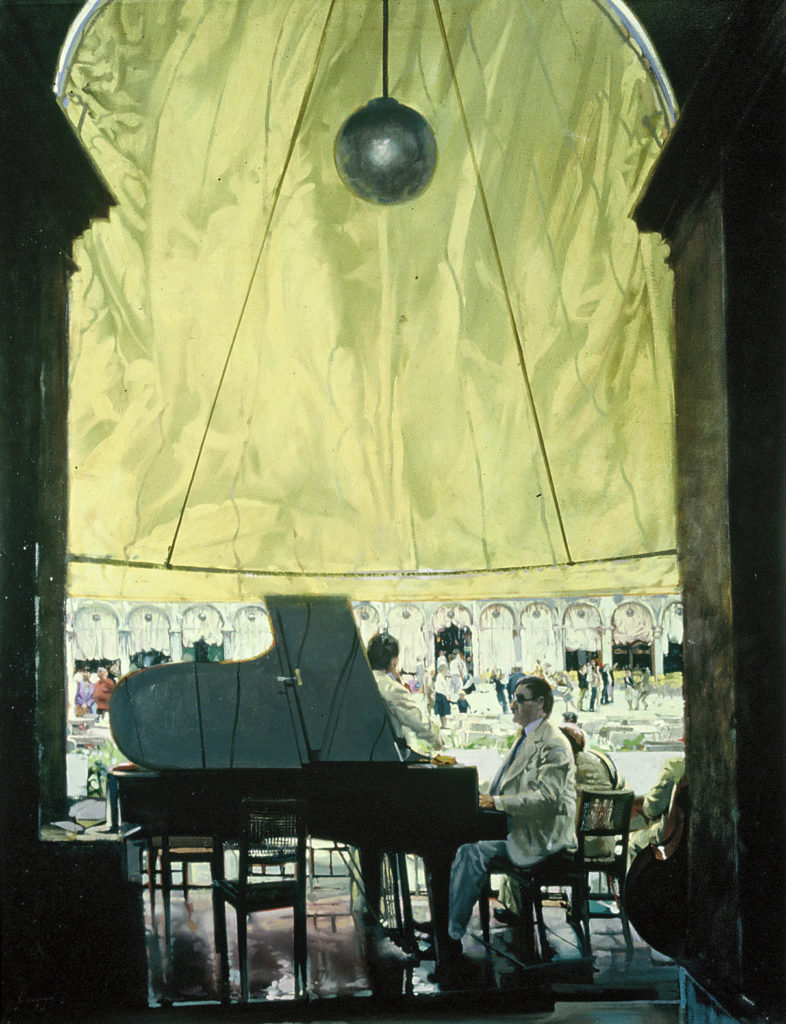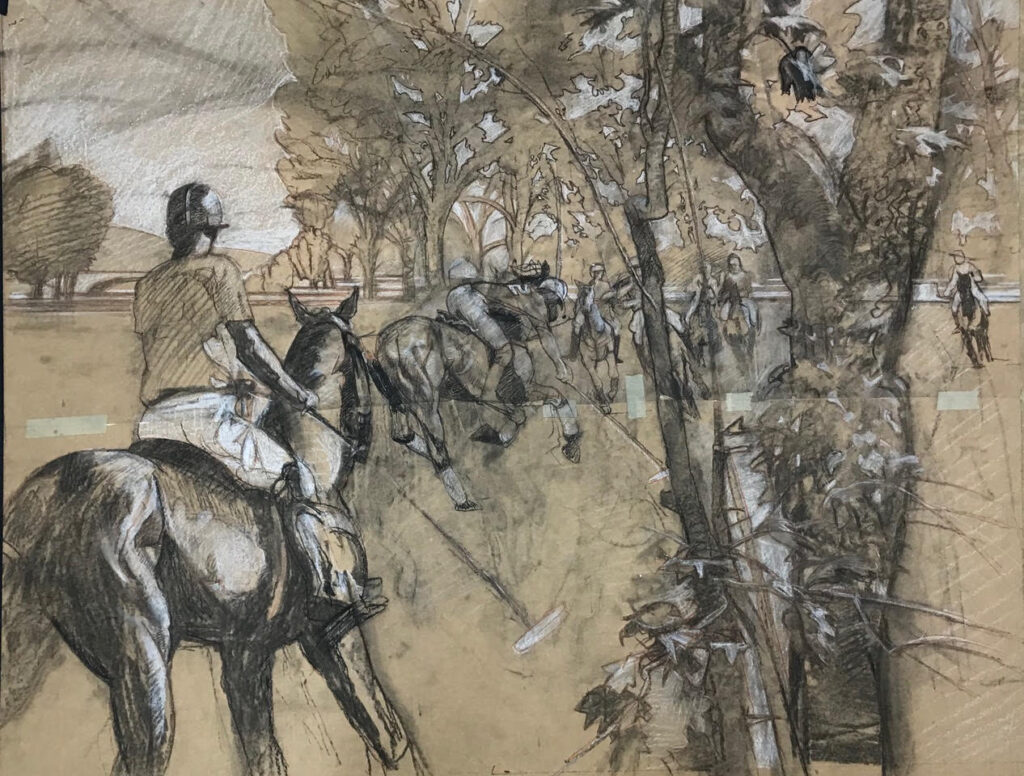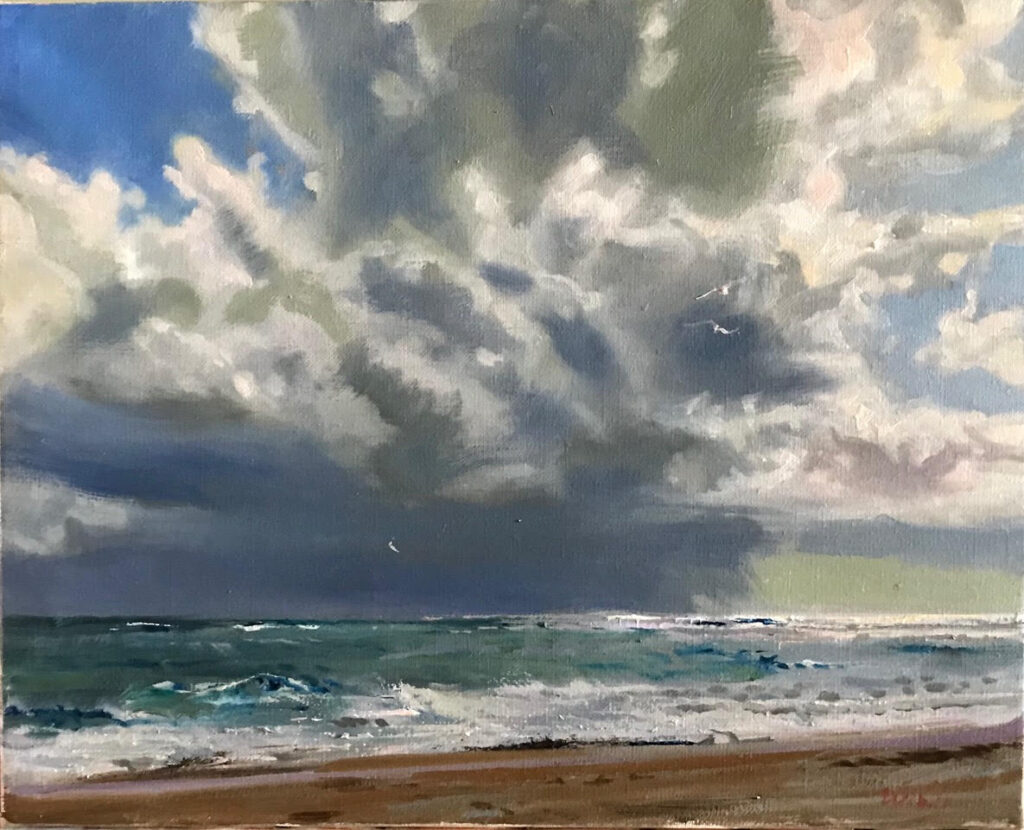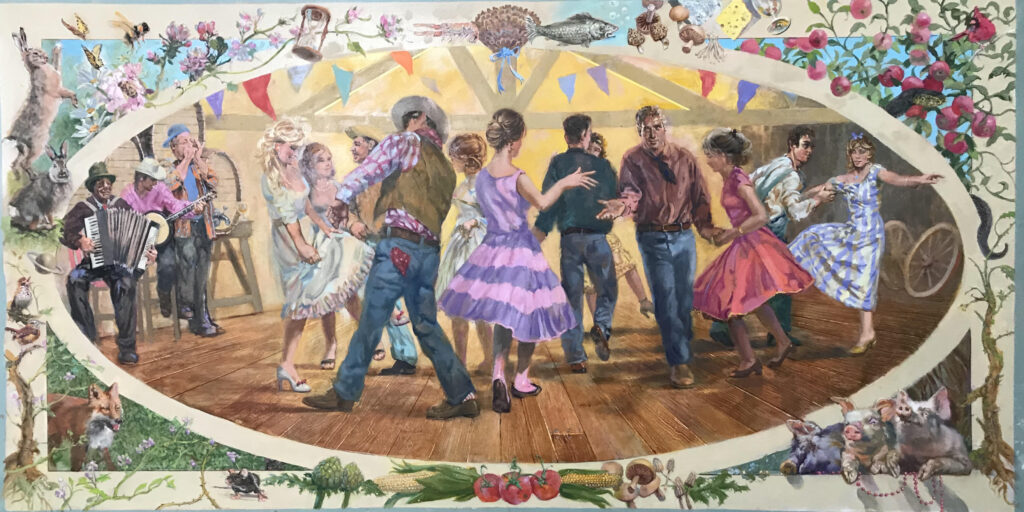Artist Statement
In my work, I explore the familiar, trying to discover a significant surprise that it still contains: an unusual effect of light, a novel cluster of shapes, an unexpected poetic feeling that may emerge.
But more, I feel that Art is the sum total of everything that’s been done. To be an artist, to be able to judge your own work, you need to be a connoisseur of what Art has been, from the beginning to the present time. I am captivated by the materials, methods, techniques, and the crafts of old masters; being a painter entails mastery of these skills oneself, in order to have the power to express your vision and the way you perceive the world. Much of this has to do with beauty, even if the subject of a work of art is tragic.
An original point of view is also essential. I believe that the function of art is to charm the senses and captivate the mind, and that the best servitors of the new are those who know and love the old, and carry it over into the new in fresh, exciting ways.
Drawings
Some of my drawings are studies for paintings, while others were done for the sheer pleasure of drawing for its own sake. I use all three classical methods of the great masters: Contour, Gesture, and Chiaroscuro (or light and shade drawings.) And I work without preference in all media: pen and ink, pencil, charcoal, and brush.
Contour drawings are slowly achieved and deliberate: careful eye/hand coordination is the key. Whereas Gesture drawing is deftly-executed, aimed at swiftly capturing a spontaneous feeling of the subject’s movement. In Chiaroscuro drawing, one uses light and shade modeling to create a sense of three-dimensional weight and volume and, equally important, the play of light.
There is a level of focus and concentration so engrossing in all drawing that one loses oneself in the process. It is an out-of-body experience.
Paintings
Most of my paintings are made from direct observation, while others are created solely from imagination. Even when working from observation, I have never tried to record precisely what I saw: as Degas famously said, “I paint what I wish to see.”
In being an artist, there is a threefold pleasure: the pleasure of manual labor, working with our hands; the pleasure of the intellect, working with our minds; and finally, the pleasure of the “muse” — inspiration and fantasy.
Those in other professions lack the same liberties. Doctors, carpenters, lawyers must follow the book. In brain surgery, there is no place for fantasy. Artists are freer to follow their caprices and enthusiasms, with the hope that viewers will share their their pleasures. Because, after all, a work of art is incomplete without an audience.
Murals
I love everything about painting murals. They stimulate my imagination to break out of the ego shell, to get out of myself — exstasis — because they force me to explore realms beyond my personal experience; to stretch my talent, imagination, and physical ability far beyond the comfortable necessities of easel painting.
Murals are works of art that decorate walls and tell a story; hence they are sometimes referred to as “Narrative Art.” Murals are designed for an ambulatory spectator, someone moving through time and space — as opposed to easel paintings, which are seen from a fixed vantage point.
Easel paintings, on a smaller, even intimate, scale can be created spontaneously. There is nothing spontaneous about murals. They are perfect examples of “planned pictures.” They proceed in stages: the conceptual sketch; the preliminary cartoon; the projection onto the wall; and the final execution in color. Their scale allows for complex compositions; the pictorial dynamics can be orchestrated symphonically, with different elements that have room to be exploited on a grand scale.
I feel happy to be a part of the tradition of this oldest form of art — murals — from the prehistoric walls of Altamira, Lascaux, the Tassili, and every culture worldwide, enduring even to our own time.



